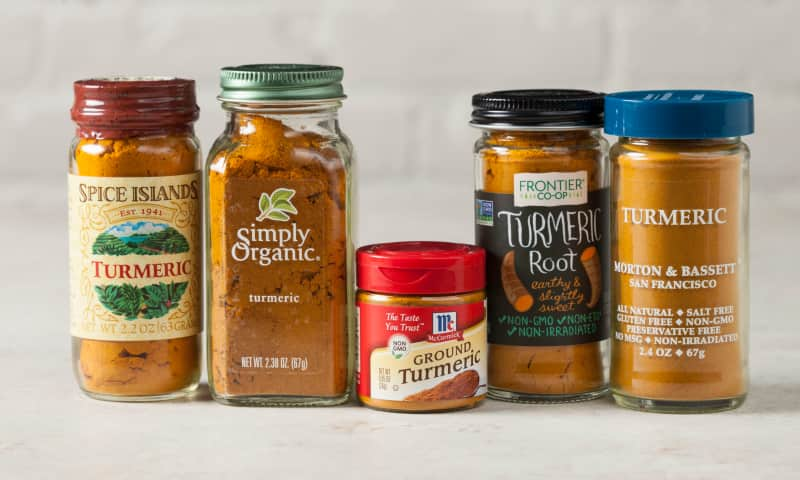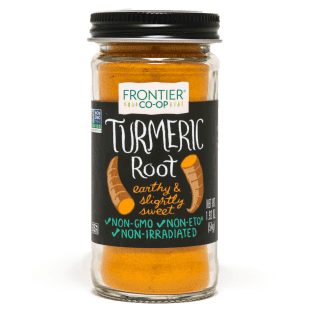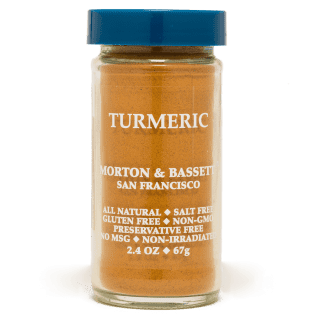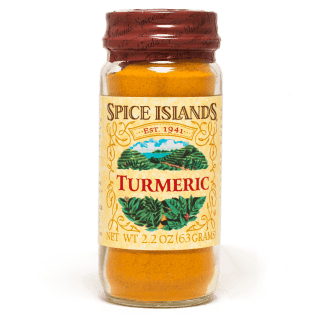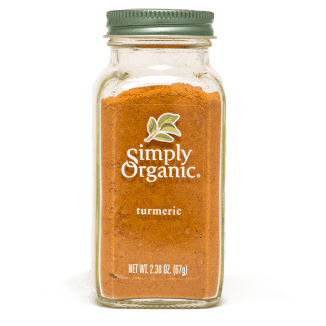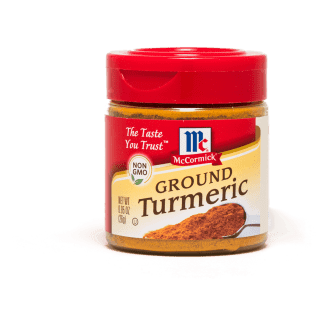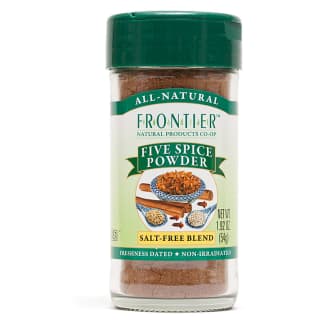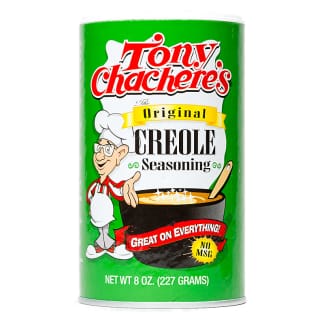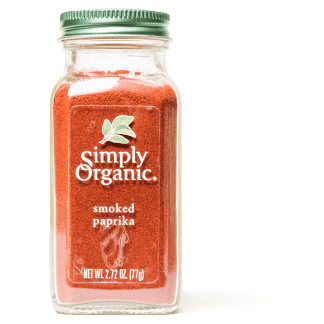Turmeric is one of the latest so-called superfoods to take America by storm. We've always used it in Indian-inspired curries, rice, and vegetables, but now this vibrant orange root is showing up in all sorts of foods and drinks. Coffee shops are serving turmeric teas and lattes. Supermarkets are selling bottled turmeric juice blends and turmeric-flavored energy bars. It's not all health food, either. Kraft recently subbed out the artificial dyes in its boxed macaroni and cheese for a natural mix including turmeric. Internet searches for turmeric increased by 56 percent in 2016 alone, according to a Google study of digital food trends. This uptick in popularity has been fueled in large part by curcumin, a compound in turmeric that has gotten a lot of attention for its antioxidant properties, although no scientific studies have proven that eating it confers any health benefits.
Most of the world's turmeric is grown in India, where it's been cultivated for centuries. The portion of the plant that's aboveground is green and leafy. The edible part is the underground stem, or rhizome. It's small and knobby, with dark orange flesh and a thin brown peel. It looks similar to ginger, another rhizome in the same family of plants. It's possible to find the fresh stuff in some supermarkets, but it's not as widely available as ground turmeric.

Do all ground turmerics offer the same vibrant golden color? And do they taste different? To find out, we purchased five ground turmeric products. We sampled them in two blind tastings: in warm milk (a neutral application inspired by turmeric lattes) and in our Turmeric Chicken Salad.
Tasting Turmeric
We often combine turmeric with strong spices such as cinnamon, cumin, ginger, and coriander, and we use it as much for its striking golden color as we do for its flavor. When we focused solely on the flavor of turmeric in our tastings, we were surprised by how much it stood out. In both applications, the turmeric added a distinctly earthy and slightly sweet flavor. We also realized how much of the pleasant woodsy depth we associate with Indian-inspired curries is due to turmeric.

Many products had a warm, “zippy” quality that reminded us of ginger. Some had a “piney” flavor and contributed a gentle “cooling” sensation. Others were “vegetal” and “grassy.” Although we liked samples that were “herbal but mild,” we preferred products that were more potent. Our favorites tasted deeply “earthy” and “woodsy” and smelled lightly “floral.” There's good news: You can't go wrong with any of the turmerics we tested. In fact, we fully recommend all of them.
Does Processing Matter?
To understand the source of the differences we'd noticed, we first looked at processing. It usually goes something like this: The plant grows for seven to 10 months, and then the whole thing is carefully dug up. A portion of the root known as the “mother” is saved for replanting, and the rest of the root's “fingers” are washed and boiled for about 45 minutes to soften them. Next, they are cured under a layer of leaves for several hours. At this point, the roots are sun-dried or placed in a mechanical dryer before being polished to remove the tough outer surface and any lingering debris. Finally, the roots are “cracked” into smaller pieces, ground to a fine powder, and filtered through mesh screens.
Golden Glow
Manufacturers employ techniques to shorten production time, which helps prevent the spice from losing its vibrant color and pungent flavor in the presence of oxygen and sunlight.
Turmeric degrades in the presence of heat, oxygen, and sunlight, so manufacturers benefit from minimizing exposure to those elements during processing. Some techniques include keeping the turmeric “fingers” whole for as long as possible and using mechanical dryers and polishers, which shorten the processing time by hours or even days.
All the manufacturers in our lineup typically source their turmeric from India and don't use any additives. Straight from the jars, the powders were similar shades of deep orange; they also infused recipes with the same bright, vibrant yellow-gold color we expect from turmeric. Most likely, the range of flavors and aromas we'd noticed was due to the many flavor compounds in turmeric. Among them are beta-pinene, which tastes piney; eucalyptol, which also gives eucalyptus its aroma; and zingiberene, the primary chemical responsible for ginger's flavor.
A Closer Look At Curcumin
While we'd learned a lot about turmeric, we were still curious about curcumin. As Harold McGee writes in On Food and Cooking (2004), “The major pigment in turmeric is a phenolic compound called curcumin, which turns out to be an excellent antioxidant.” Fresh turmeric can contain between 2 and 5 percent curcumin. Three manufacturers told us that their ground turmeric contains similar levels, from 3.6 to 5 percent; the others declined to comment. Although curcumin is associated with turmeric's purported health benefits, it doesn't have any bearing on flavor: According to Turmeric: The genus Curcuma (2007), “Curcumin is the pure coloring principle and contains very little of the flavor components of turmeric.”
To confirm the manufacturers' quoted curcumin figures and to see how the other products in our lineup compared, we performed a quick experiment. In the presence of the chemical element boron, the color of curcumin changes from gold to bright red. Curcumin is soluble in ethanol, so we combined measured amounts of turmeric in small cups of vodka and allowed the solids to sink, leaving us with a curcumin-vodka mixture. We then added those to a combination of water and the laundry detergent booster Borax, which contains boron. Sure enough, the products that manufacturers told us contained about 5 percent curcumin turned a darker red than the product we were told contained 3.6 percent. The other two were on the pale end of the spectrum. The difference could be due to processing (curcumin levels can decrease when turmeric is exposed to light and heat) or to the natural variation in the fresh roots. So while it won't affect the flavor of your food, if you're interested in purchasing a turmeric that's higher in curcumin, both of our top scorers contain about 5 percent.
Curcumin is the pure coloring principle and contains very little of the flavor components of turmeric.

Buying the Best Turmeric
Not all food trends have staying power, but we think turmeric deserves this moment in the spotlight. All the samples impressed us with vibrant, deep orange color that turned lattes and chicken salad a striking golden yellow. The difference between the top- and bottom-ranked products was relatively small, and we can recommend all the turmerics we tested. That said, a product with especially strong “floral,” “earthy,” and “gingery” notes was the clear favorite. In a crowd of good options, Frontier Co-op Ground Turmeric stood out.
- Taste in warm milk (each product steeped in hot milk and strained) as a neutral application
- Taste in our Turmeric Chicken Salad to see how products fared in a savory recipe
- Confirm reported curcumin levels of each product by dissolving measured amounts of each product in vodka and adding solution to a mixture of boron and water
- Earthy, woodsy flavor
- Slightly gingery spice
- Bright, vibrant, deep orange color
